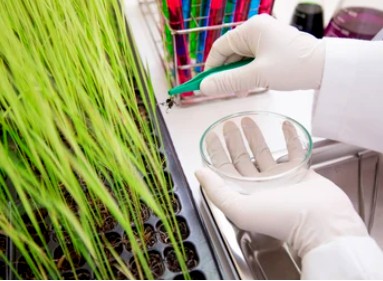RNA interference (RNAi) can be used for pest control, providing a targeted approach to silencing essential genes in pests, thus offering a potential solution for effective and environmentally friendly pest control.
Lifeasible specializes in life sciences and biotechnology development. We offer RNAi bioactivity assay solutions that assess the effectiveness of RNAi-based pest control strategies in terms of efficacy and play a key role in pest control.

What do we offer?
Analysis of insecticide bioactivity
Our Solutions
For different pests and diseases, we have established a standardized RNAi bioassay system to provide indoor and field bioactivity assays of multi-species RNAi target genes.
Indoor bioactivity assay
- Design and synthesize RNAi primers. First, specific RNAi primers need to be designed to ensure that RNA interference targets specific genes in the pest. Then synthesize the designed RNAi primers, which can be obtained by chemical synthesis or in vitro transcription methods.
- Cell culture and transfection. Cells were transfected with the synthesized RNAi constructs.
- Gene silencing assessment. After transfection, cells expressed the RNAi construct and degrade the target mRNA. Cells were harvested at predetermined time points after transfection for gene expression analysis.
- Observe biological activity. Observe the growth, development, and survival of pest cells or individuals to assess the efficiency and specificity of RNAi constructs.
Field bioactivity assay
- RNAi vector construction. Designed RNAi primers are embedded in appropriate RNAi vectors, such as plant viral vectors or bacterial vectors. This is to enable the expression of RNAi primers in plants or microorganisms.
- Transformation of plants or microorganisms. Introduce the RNAi vector into the plant or microorganism to express the RNAi primer.
- Field trials. Conduct a field trial in a real farmland environment where RNAi-expressing plants or microbes are brought into contact with target pests.
- Observation of biological activity. Evaluation of the biological control effect of RNAi technology in a real environment requires monitoring the population, development, and damage level of the target pests in the field.
Bioactivity assay of RNAi target genes
- Feeding bioassays. Targeted pests are exposed to plant material or artificial diets containing RNAi triggers. Pest feeding behavior and survival are monitored to provide valuable insights into the RNAi treatment efficacy.
- Localized application assays. RNAi molecules are applied directly to insects' body surfaces. Target pests are exposed to the RNAi agent through droplets or films, resulting in rapid, direct gene silencing.
- Ingestion assay. This type of assay involves feeding the insect prey or plant material pretreated with RNAi molecules. Ingestion of the RNAi-treated material causes gene silencing in the pest's gut, which affects its physiology and survival.
- Residual exposure assays. In these assays, treated surfaces are prepared with RNAi triggers. Pests come into contact with these surfaces, resulting in post-exposure gene silencing.
Our service workflow

Lifeasible aims to provide comprehensive and effective solutions for determining the biological activity of RNAi target genes. Our solutions are targeted, sustainable, and environmentally friendly for pest control management. If you are interested in us, please feel free to contact us.
For research or industrial raw materials, not for personal medical use!

